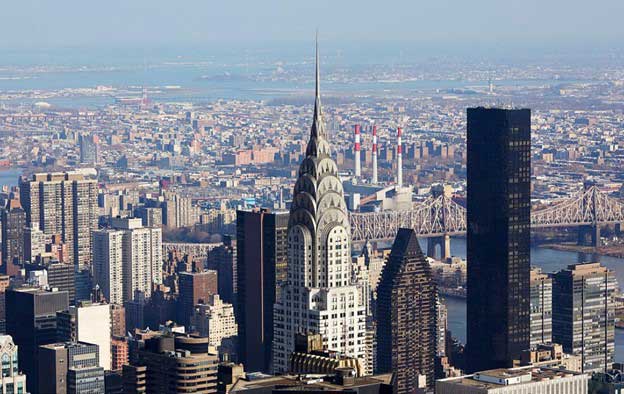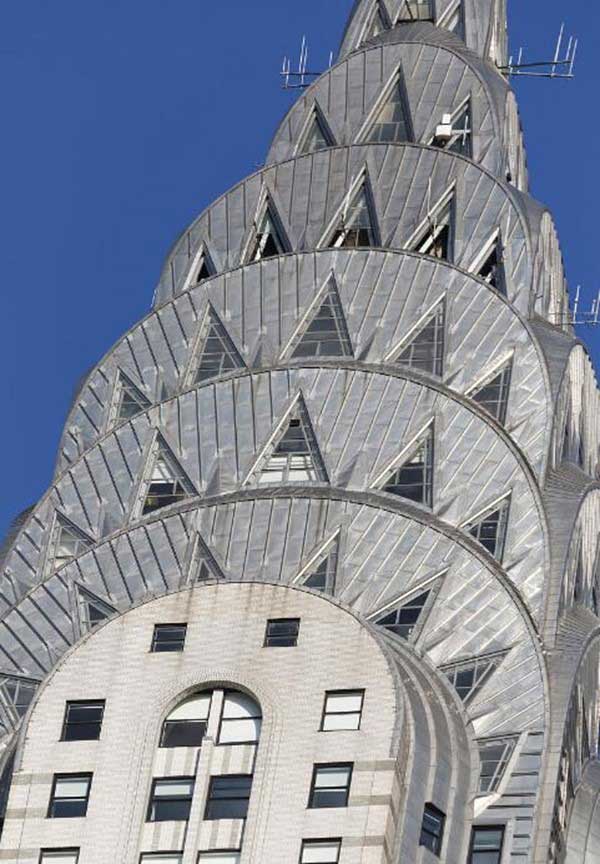Overview
Nowadays, sustainability has been a major concern for folks from all walks of life, including architectural designers. Sustainable architecture design cannot be divorced from green construction materials. If the building materials are compared in terms of sustainability from various angles such as long-term performance, consumption of energy & water resources, environmental impact and recycling, stainless steel materials prevail, especially for those buildings with a service life of more than 30 years.

Stainless steel surface finishes vary from ordinary matte finishes, soft finishes, finishes with specific texture patterns and colors, to highly polished mirror finishes. The diversity brings more design options for imaginative designers. Let’s continue to explore world famous architectures built from stainless steel materials.
The Chrysler Building, New York, USA

Back to Year 1930, people whoever caught a sight of the Chrysler Building in New York were astonished without exception by its glorious roof panels. It was the first time ever that stainless steel had been used as decorative panels in a main building. What’s more, the roof had been serviced and cleaned for only three times in the previous 87 years, specifically, in year 1961, 1996 and 2001. Meanwhile, the cleaning only involved the daily household cleaners. The roof was found in excellent condition during maintenance.
Shizuoka Prefectural Fuji Swimming Pools in Fuji-shi, Shizuoka, Japan

Shizuoka Prefectural Fuji Swimming Pool was planned as the main stadium for the 2003 National Sports Festival. Designed by architets Show Sekkei, it was completed in March 2002 with a total floor area of 13,278㎡. The enclosing structure was clad by grade 220M stainless steel made by NSSC. The wooden decks assembled outside on one side of the pool creates an atmosphere of comfortable open space. The facilities are open not only to sports teams, but also to local residents. Passivated stainless steel are applied in the pool exterior, giving it a look of a water drop rolling down from Mount Fuji. The base part exhibits nature and power of Mount Fuji. In 2003, the facilities were remarked as "The Seven Wonders of The world" in newest modern architects by famous USA travel magazine CONDE NAST TRAVELER.
Dalarna Media Library in FALUN SWEDEN

The new library at Dalarna University has officially been open to the public. The architectural firm ADEPT designs the library into a multi-functional style, allowing the 3,000-square-metre 'knowledge spiral' to merge naturally into the surroundings of the campus in Fallon, Sweden. In collaboration with Danish artist JeppeHein, the firm has developed a special double facade with reflective horizontal sheet (in very thin sheet structure) facing a wood cladding. This sheet is made of stainless steel, i.e., highly polished stainless steel sheet. Neither the artist nor ADEPT view the development of the facades as a stand-alone piece of art. Instead, the delicate design of the facades gives a detailed and refined expression with an immateriality that mirrors its surroundings and the people in it with broken reflections.
La Madeleine Media Library in La Madeleine, France

La Madeleine Media Library was designed by a French firm, TANK, headed by OlivierCamus and Lyder Veauvy. The building covers almost the entire island. Nine triangular sheds are built over the regular frame columns. On the roof and outside walls are polished stainless steel sheets and large slabs of flat glasses. The north-facing windows bring light into the room softly and diffusely. The roof is constructed to accommodate the environment, open to the natural landscape and garden. It can be folded gently to lead the flow of rainwater to the garden through triple monster-like drip mouths. Additionally, 90 wooden panels are applied in design to allow for a versatile space in this completely open and flexible environment.
Conclusion
All in all, Stainless steel, whether from its corrosion resistance ability, its application in extreme environments or its wide variety of finishings, enables the designers to achieve the pleasant aesthetic effects they aspire to. No wonder we are seeing increasing buildings constructed by stainless steel materials in recent decades.

